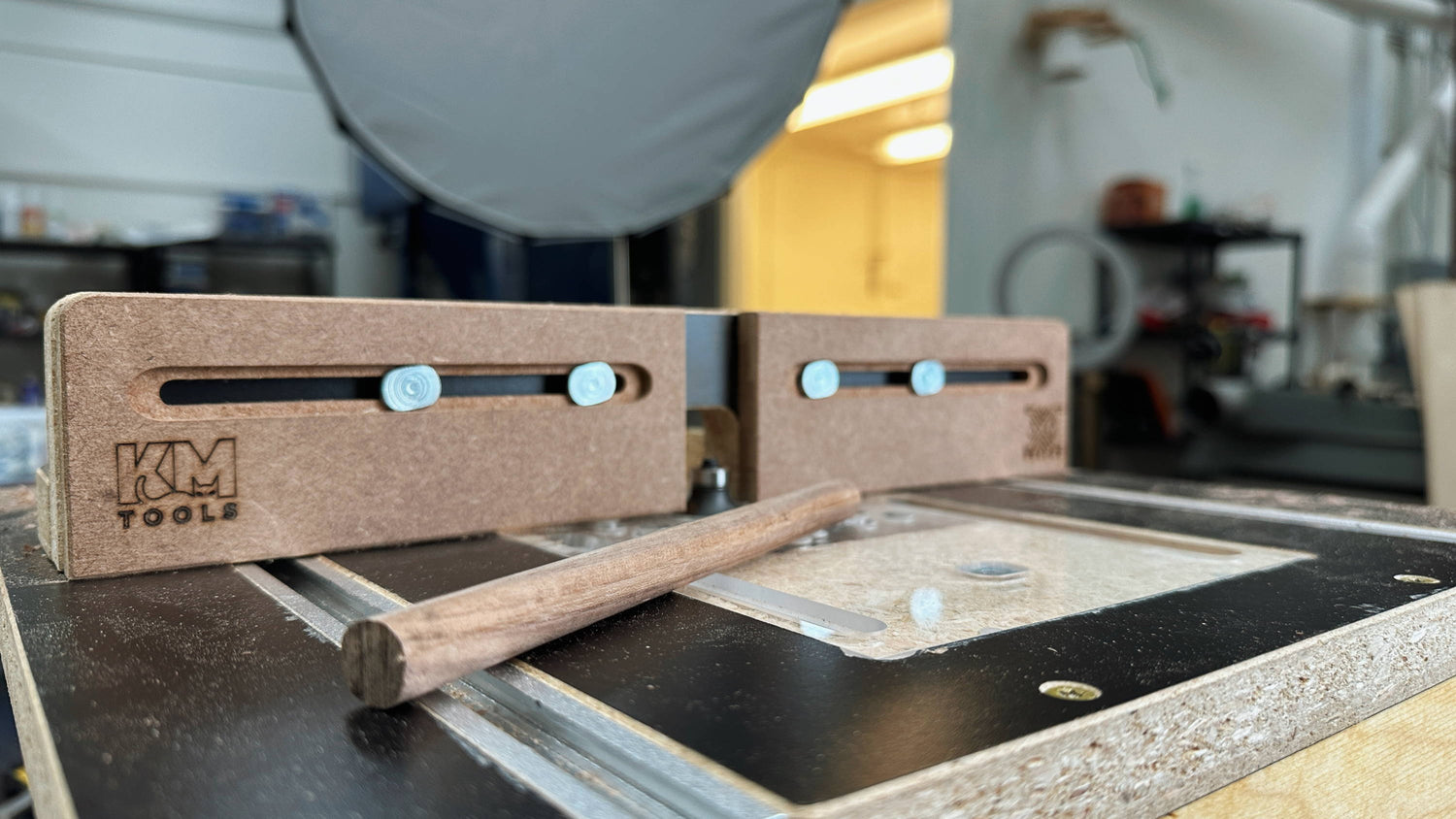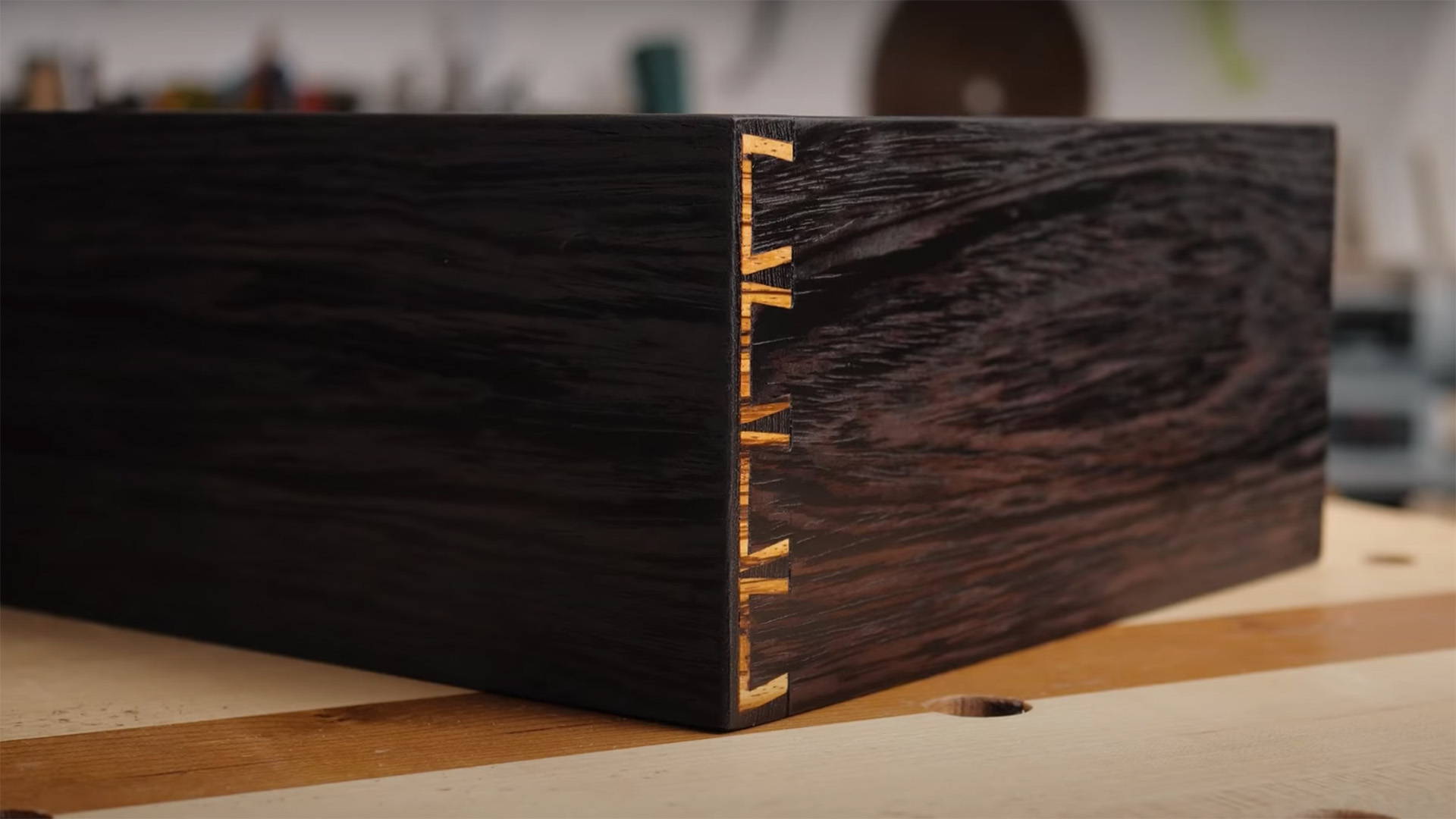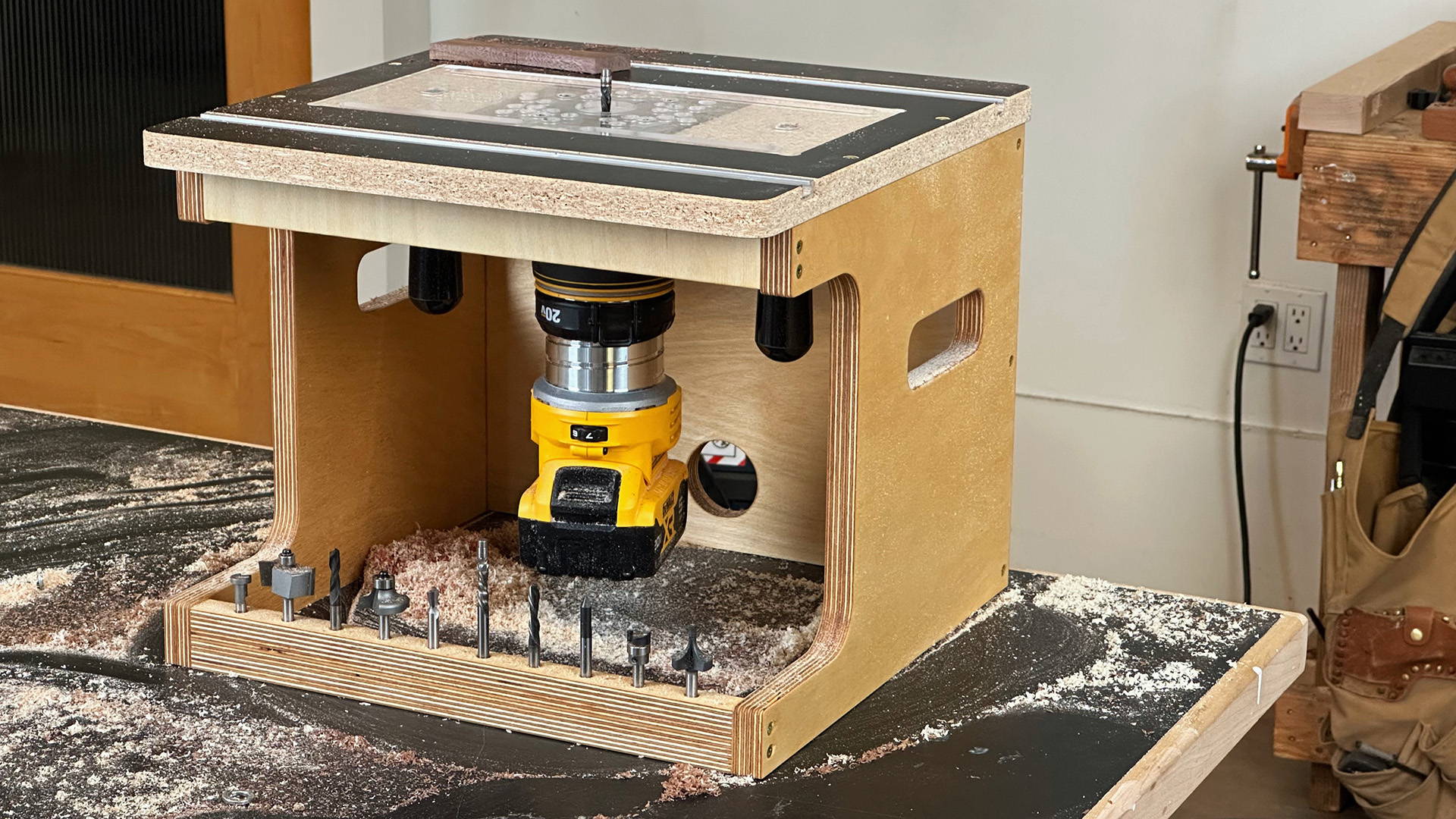Ever wanted custom dowels to suit the wood species and dimensions of a project? Today’s Quick Tip explains how to do just that.
Dowels are a great way to build furniture, secure joinery, and hide screws in a project.
But the poplar or oak dowels you buy at hardware stores might look jarring in a project made out of walnut — and the standard diameter of ⅜” might not suit your needs.
The process for making your own dowels is simple. And my favorite method involves a router table and a roundover bit.
Here’s how it works:
1. MILL YOUR STOCK
Mill your stock to the square dimensions of the diameter you’re after. For example, if you want a 1” diameter dowel, mill your stock to 1”x1”.
Make sure to leave it at least 2” longer than the final length you’re after.
2. SET UP THE ROUNDOVER BIT
Grab a roundover bit that’s radius is half of the final diameter you’re after. If you want a 1” diameter dowel for example, use a bit with a ½” radius.
Once the bit’s in the router table, you need to adjust the height.
Place the blade of a square across the opening the bit protrudes from. Raise the bit until the bottom corner of the cutting edge (the section furthest from the shank) just barely touches the square.
Getting this right is critical to a perfectly round dowel.
3. SET UP YOUR ROUTER TABLE FENCE
You could just use the bearing on the roundover bit — but I like to use my router table fence for extra stability.
Adjust the position of the fence so it’s perfectly in line with the bit’s bearing. Again, the blade of a square makes this easy.
If your router table fence has adjustable faces, close the opening around the bit as much as possible.
4. LEAVE THE ENDS, ROUNDOVER THE MIDDLE
The critical part of cutting dowels on a router table is leaving square sections on the end of your workpiece (that’s why you cut in long).
This creates stability and accuracy when cutting the roundovers. You can set up two stop blocks on the router table fence to help or just eyeball it.
Start the cut by pushing the stock sideways into the router bit until it’s flush against the fence. Make sure there’s around a 1” section of stock that isn’t cut ahead of the bit.
Once your workpiece is flat against the fence, push it through the bit. Stop around 1” before the end of the workpiece.
Flip the workpiece and repeat the process for the three other sides.
When you’re done, you’ll have a dowel with two square blocks at both ends.
5. TRIM AND REFINE
Use a hand saw or bandsaw to cut off the square sections at either end of the dowel.
To test, drill a 1” hole in a piece of scrap and see how the dowel fits. You can always refine the shape with sandpaper.
Want to learn more about router tables? Read Router Table 101: Intro to One of the Shop’s Most Versatile Tools.
Need some roundover bits? The CMT Roundover Bits we carry come in ¼” and ½” shank versions, with radii from ⅛” to ¾”.
With brazed carbide blades, heat protective coatings, and anti-kickback designs, these are the only roundover bits you’ll ever need.
Do you have another method for cutting your own dowels? Let us know in the comments below!
Follow us on Instagram @katzmosestools, on TikTok @katzmoseswoodworking, and check out my YouTube channel for more great woodworking content...
And as always, STAY SAFE IN THE SHOP!











3 comments
Marshall
You might consider driving an inexpensive poplar dowel into the wood 1/4 inch and place a plug made with a plug cutter. Plug cutters are reasonably priced and come in different sizes and you can use scraps to make them. Placing a plug also gives an easily managed option of placing the plug grain the way you want it, verses struggling with the whole dowel. Just s thought. There’s lots of ways of doing things for sure.
You might consider driving an inexpensive poplar dowel into the wood 1/4 inch and place a plug made with a plug cutter. Plug cutters are reasonably priced and come in different sizes and you can use scraps to make them. Placing a plug also gives an easily managed option of placing the plug grain the way you want it, verses struggling with the whole dowel. Just s thought. There’s lots of ways of doing things for sure.
Terry Christian
Interesting article. Thanks for educating me.
Can you make an octagonal nunchuck with a similar process?
Interesting article. Thanks for educating me.
Can you make an octagonal nunchuck with a similar process?
KG
Yes, you CAN do it this way but I can’t help but wonder why you would want to, let alone whether you SHOULD. It’s dependent on careful milling as a pre-requisite and in order to overcome safety concerns, you have to leave the ends AND employ all your work-holding from the ends of thin stock or a push stick, inviting opportunities for loss of control.
Why not just use a dowel plate or dowel cutter? Both can handle far less exacting stock prep up front (cone end, oversize rough octagon) and are likely to be faster even without factoring in the milling. Yes, a dedicated dowel cutter like a Veritas is 2-3x the cost of the CMT bit per size, though most people won’t need more than a couple sizes. Alternately, dowel plate may sacrifice a little in surface quality for certain woods (if that even matters in your application) but most come with 5 or more sizes for the one time cost.
In the end, this is a technique that will definitely work, but it’s fiddly and slow compared to some other simpler options. I would hold this in reserve for those “need a solution today” cases when you’re in a pinch, have the needed roundover on hand, and can spend the extra time needed to mill, set up, and get this done today vs planning ahead or waiting for shipping. If you have the choice and can plan the project in advance, do yourself a favor and at least consider a dowel cutter or dowel plate.
Yes, you CAN do it this way but I can’t help but wonder why you would want to, let alone whether you SHOULD. It’s dependent on careful milling as a pre-requisite and in order to overcome safety concerns, you have to leave the ends AND employ all your work-holding from the ends of thin stock or a push stick, inviting opportunities for loss of control.
Why not just use a dowel plate or dowel cutter? Both can handle far less exacting stock prep up front (cone end, oversize rough octagon) and are likely to be faster even without factoring in the milling. Yes, a dedicated dowel cutter like a Veritas is 2-3x the cost of the CMT bit per size, though most people won’t need more than a couple sizes. Alternately, dowel plate may sacrifice a little in surface quality for certain woods (if that even matters in your application) but most come with 5 or more sizes for the one time cost.
In the end, this is a technique that will definitely work, but it’s fiddly and slow compared to some other simpler options. I would hold this in reserve for those “need a solution today” cases when you’re in a pinch, have the needed roundover on hand, and can spend the extra time needed to mill, set up, and get this done today vs planning ahead or waiting for shipping. If you have the choice and can plan the project in advance, do yourself a favor and at least consider a dowel cutter or dowel plate.